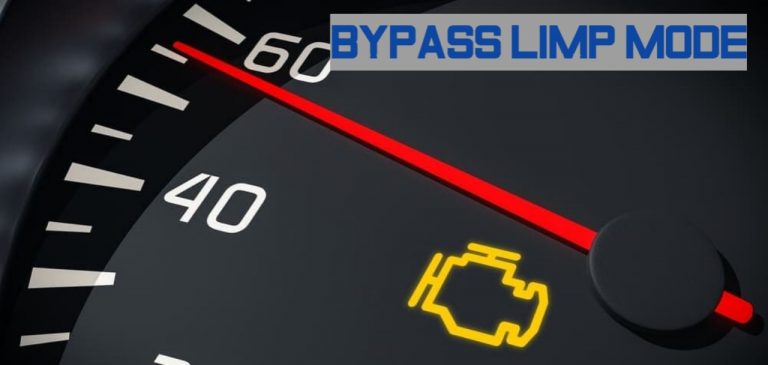The Limp Mode is often encountered in vehicles when the engine or the transmission control unit notices a critical issue in your car.
While the Limp Mode impacts our driving experience, it also helps preserve the transmission unit and engine from damage.
You’ll likely experience reduced speed, an Air conditioner turned off, limited RPMs, and others.
This OBD-II system fault can also be addressed in fail-safe or emergency modes.
Nevertheless, this article will show you how to bypass the Limp Mode on your automobile and list some of its causes and symptoms for you.
Continue reading…
Symptoms of the Limp Mode
Although, you can use an OBD-II scanner to read the problem at your convenience or take your vehicle to your mechanic.
If you start noticing any of the below symptoms in your vehicle, you might have encountered the Limp Mode problem.
- The check engine light will turn on
- Decreased engine power / Overheating
- Reduced speed limit up to 35 and 45 MPH
- RPMs are reduced to about 2000 or 3000 RPM
- Unable to change gear
- The throttle pedal is not responding quickly.
- Noise in the engine or transmission
You must treat the Limp Mode impacts urgently to avoid spreading the damage.
How to Bypass the Limp Mode
Most cases require that you park your vehicle at a spot once you notice any of the above symptoms before implementing any of the below fixes.
Although cooling your car’s engine can sometimes reset the Limp Mode, it might not be permanent.
Notwithstanding, here are a couple of bypassing techniques you can implement to get your car out of Limp Mode.
- Park your car at a reliable point and enter Park Position
- Switch OFF your ignition either by key or by button
- Wait for a few minutes for the vehicle to cool off
- Ignite the engine of the vehicle
- Continue driving
These are some proven ways to bypass the Limp Mode on your car.
Also, if it’s a case of Overheating, allow your engine to cool off entirely before turning it back on. Although, it might not work, especially when your vehicle has transmission faults.
Proceed with any of the below troubleshooting steps if you’re car continually runs into Limp Mode after trying the above temporal fix.
How to Get a Vehicle out of Limp Mode
Here is another solution you can use if your vehicle encounters Limp Mode.
- Check Oil Level
- Check your head gasket
- Replace faulty spark plugs
- Check the Mass Airflow Sensor
- Check the wiring harness
- Low battery, etc.
The primary cause of vehicles entering Limp Mode is low oil, also known as low transmission fluid.
You can fix this by simply checking the oil level on your device and topping it up if required.
Revert to the manual guide to learn how to check and top up your oil.
You can also check the MAF Sensor to ensure the engine is in a better cooling condition to avoid overheating.
The battery and spark plugs should not be unchecked to avoid misfires and hard starting.
What Causes Limp Mode?
Limp Mode results in our vehicle running into error P0300 or P0720 if diagnosed with an OBD-II scanner.
Listed below are some reasons that can trigger limp mode on your car.
- Low transmission fluid Level
- Old Spark Plugs
- Faulty Mass Airflow Sensor
- The wiring harness of the system
- Faulty TPS
- Low battery
- Fluid in the engine Sensor
- Calibration needs
- Faulty MAP Sensor
- Problematic engine sensors
- Leaking transmission Body
- Involvement in car accidents
- Swollen fuse
- Overboot or Underboot.
If Limp Mode isn’t fixed correctly, it could endanger your life and that of other road users.
So, if you can’t get around it, it’s best to take your vehicle to an auto repair shop for professional assistance.
Can Low Oil Cause Limp Mode?
Yes, Low oil transmission is a vehicle’s primary cause of Limp Mode. Changing the transmission oil can also fix the Limp Mode problem.
How long can you drive a car in limp mode?
If you’re okay with its impact, you can continue driving a car in Limp Mode for as long as you like.
However, doing this for too long can cause damage to the vehicle.
Is Limp Mode Permanent?
No, Limp mode can sometimes clear itself when you turn your car off and on.
Nevertheless, you must check the root cause of the error and fix it before it creates further problems.
As an Amazon Service LLC Program Associate, V. Auto Basics earns from qualifying purchases. See Our Affiliate disclaimer.
